Spatiotemporal Analysis of Taxi-Driver Shifts Using Big Trace Data
Abstract
1. Introduction
- A two-step strategy is designed in this study to automatically detect taxi-driver shift activities from big trace data, without drivers’ identity information. The experimental results showed that the identification accuracy and recall of taxi-driver shift activities in the city of Wuhan can reach about 95% and 90%, respectively. This identification method can monitor the distribution of urban taxi-driver shifts in a timely manner and detect the occurrence of taxi-driver shifts at a low cost, thus providing technical support for intelligent traffic management in the future.
- The spatiotemporal distribution of the detected taxi-driver shift events is analyzed based on two indicators: regional coverage intensity and density. The statistical results of taxi-driver shift events in the context of space-time can assist in traffic management and taxi supervision, such as checking the illegal taxi-driver shift behaviors and serving as a reference for the site selection of parking lots for taxi-driver shifts, and thus alleviate the problems caused by the taxi-driver shifts and promote the convenience of the city.
2. The Methodology of Taxi-Driver Shift Activity Detection
2.1. Overview
2.2. Taxi-Driver Shift Behavior Analysis
2.2.1. Schedule of Taxi-Driver Shift Activities
2.2.2. GPS Data Recording During Taxi-Driver Shift Activities
2.3. The Methodology of Taxi-Driver Shift Activity Detection
2.3.1. Frequent Spatiotemporal Sequences Identification
2.3.2. Taxi-Driver Shift Activity Identification Based on Gaussian Model
3. Case Study: Identification and Spatiotemporal Analysis of Taxi-Driver Shift Events in Wuhan City
3.1. Data Preprocessing and Parameters Discussion
3.1.1. Parking Event Extraction from GPS Trajectories
3.1.2. Taxi-Driver Shift Event Detection Based on the Two-Step Strategy
3.2. Exploring the Spatiotemporal Distribution of the Detected Taxi-Driver Shift Events
3.2.1. Time Distribution of Taxi-Driver Shift Activities in Wuhan City
3.2.2. Spatial Distribution of Taxi-Driver Shift Activities in Wuhan City
3.3. Violations Analysis of Taxi-Driver Shift Events
4. Conclusions
Author Contributions
Funding
Conflicts of Interest
References
- Wang, X.; He, F.; Yang, H.; Gao, H.O. Pricing strategies for a taxi-hailing platform. Transp. Res. Part E Logist. Transp. Rev. 2016, 93, 212–231. [Google Scholar] [CrossRef]
- Esbenshade, J.; Shifrin, E. The Leased Among Us: Precarious Work, Local Regulation, and the Taxi Industry. Labor Stud. J. 2018. [Google Scholar] [CrossRef]
- Sun, D.; Zhang, K.; Shen, S. Analyzing spatiotemporal traffic line source emissions based on massive didi online car-hailing service data. Transp. Res. Part D Transp. Environ. 2018, 62, 699–714. [Google Scholar] [CrossRef]
- Kamargianni, M.; Li, W.; Matyas, M.; Schäfer, A. A critical review of new mobility services for urban transport. Transp. Res. Procedia 2016, 14, 3294–3303. [Google Scholar] [CrossRef]
- Fuji, H.; Xiang, J.; Tazaki, Y.; Levedahl, B.; Suzuki, T. Trajectory planning for automated parking using multi-resolution state roadmap considering non-holonomic constraints. In Proceedings of the 2014 IEEE Intelligent Vehicles Symposium Proceedings, Dearborn, MI, USA, 8–11 June 2014; pp. 407–413. [Google Scholar]
- Zhang, D.; Sun, L.; Li, B.; Chen, C.; Pan, G.; Li, S.; Wu, Z. Understanding taxi service strategies from taxi GPS traces. IEEE Trans. Intell. Transp. Syst. 2015, 16, 123–135. [Google Scholar] [CrossRef]
- He, T.; Bao, J.; Li, R.; Ruan, S.; Li, Y.; Tian, C.; Zheng, Y. Detecting Vehicle Illegal Parking Events using Sharing Bikes’ Trajectories. In Proceedings of the ACM SIGKDD, London, UK, 19–23 August 2018. [Google Scholar]
- Bock, F.; Di Martino, S.; Origlia, A. Smart Parking: Using a Crowd of Taxis to Sense On-Street Parking Space Availability. IEEE Trans. Intell. Transp. Syst. 2019. [Google Scholar] [CrossRef]
- Yang, H.; Ye, M.; Tang, W.H.; Wong, S.C. A Multiperiod Dynamic Model of Taxi Services with Endogenous Service Intensity. Oper. Res. 2005, 53, 501–515. [Google Scholar] [CrossRef]
- Zhang, W.; Zhang, X.; Feng, Z.; Liu, J.; Zhou, M.; Wang, K. The Fitness-to-drive of Shift-work Taxi Drivers with Obstructive Sleep Apnea: An Investigation of Self-Reported Driver Behavior and Skill. Transp. Res. Part F 2018, 59, 545–554. [Google Scholar] [CrossRef]
- Deng, C.C.; Ong, H.L.; Ang, B.W.; Goh, T.N. A modelling study of a taxi service operation. Int. J. Oper. Prod. Manag. 1992, 12, 65–78. [Google Scholar] [CrossRef]
- Kamga, C.; Yazici, M.A.; Singhal, A. Hailing in the rain: Temporal and weather-related variations in taxi ridership and taxi demand-supply equilibrium. In Proceedings of the Transportation Research Board 92nd Annual Meeting (No. 13-3131), Washington, DC, USA, 13–17 January 2013. [Google Scholar]
- Meng, P.C.; Tang, X.C.; Yang, Q.; Xu, Y. The mathematical model of taxi drivers-shift change. Math. Pract. Theory 2010, 40, 247–252. [Google Scholar]
- Li, Y.M.; Wang, J.Y. Determining the optimized location for taxi drivers-shift change using a clustering methodology. Sci. Technol. Assoc. Forum 2012, 10, 94–96. [Google Scholar]
- Sun, R.; Yu, H.T.; Du, Y. Spatial analysis algorithm for taxi drivers-shift. In Proceedings of the Annual Conference of ITS China, Henan, China, 23–24 June 2012. [Google Scholar]
- Tang, L.; Zheng, W.; Wang, Z.; Hong, X.U.; Hong, J.; Dong, K. Space time analysis on the pick-up and drop-off of taxi passengers based on GPS big data. Geo Inf. Sci. 2015, 17, 1179–1186. [Google Scholar]
- Giannotti, F.; Nanni, M.; Pedreschi, D. Efficient Mining of Temporally Annotated Sequences. In Proceedings of the Siam International Conference on Data Mining, Bethesda, MD, USA, 20–22 April 2006; pp. 346–357. [Google Scholar]
- Yang, X.; Tang, L.; Niu, L.; Zhang, X.; Li, Q. Generating lane-based intersection maps from crowdsourcing big trace data. Transp. Res. Part C Emerg. Technol. 2018, 89, 168–187. [Google Scholar] [CrossRef]
- Yang, X.; Tang, L.; Zhang, X.; Li, Q. A Data Cleaning Method for Big Trace Data Using Movement Consistency. Sensors 2018, 18, 824. [Google Scholar] [CrossRef] [PubMed]
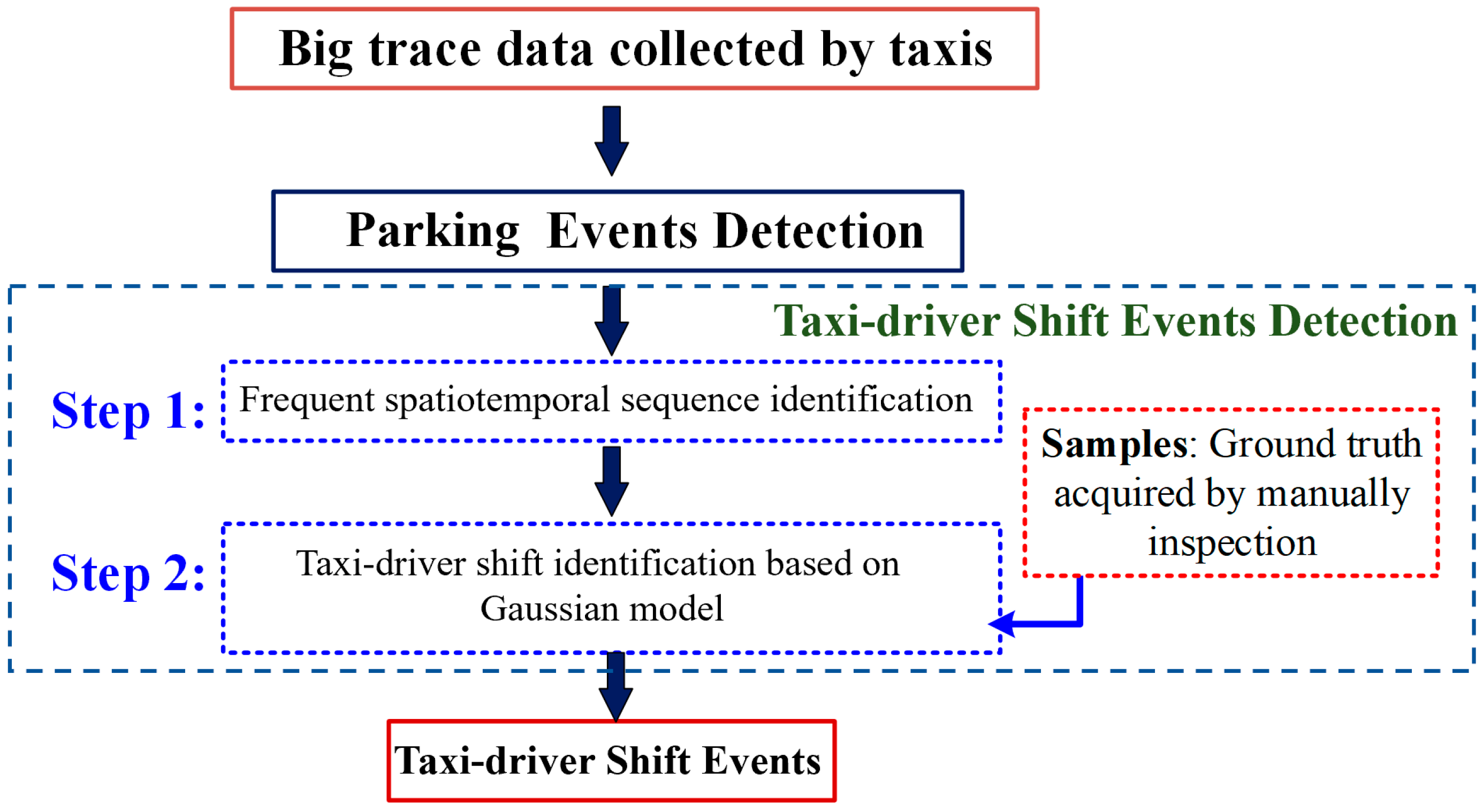
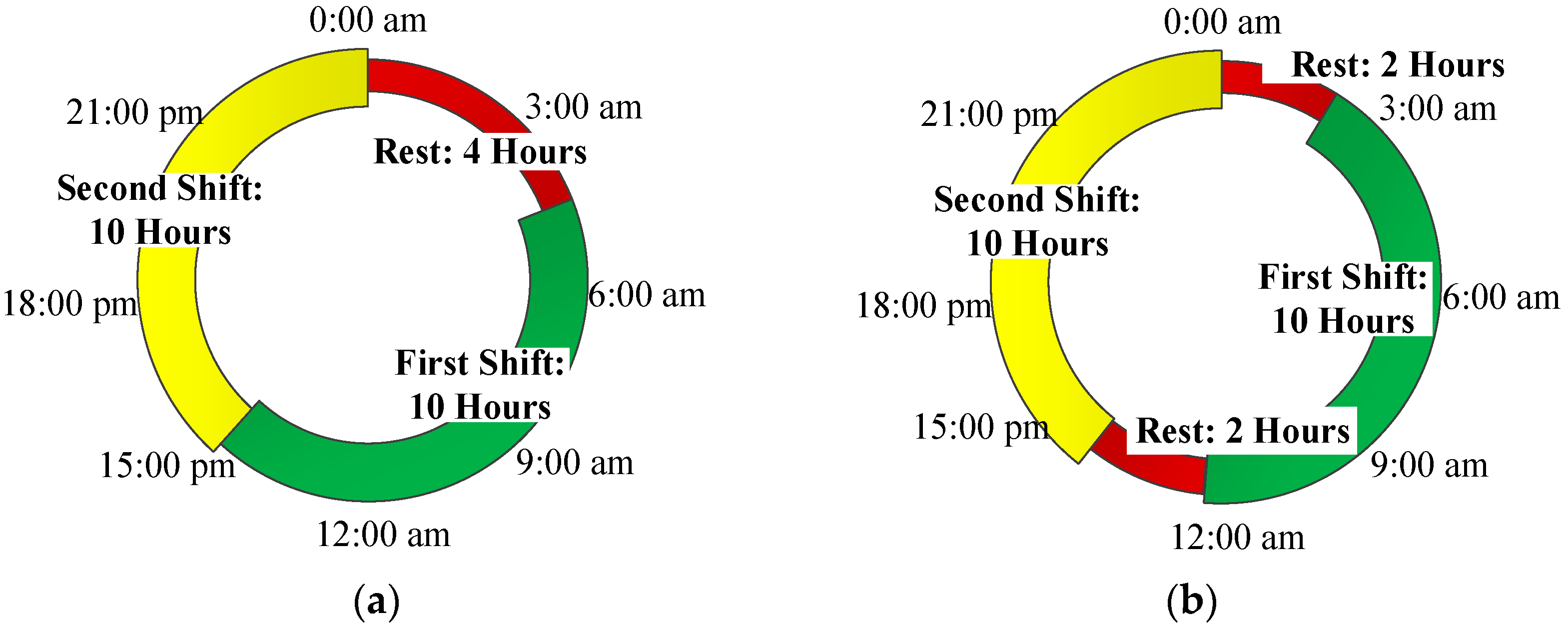
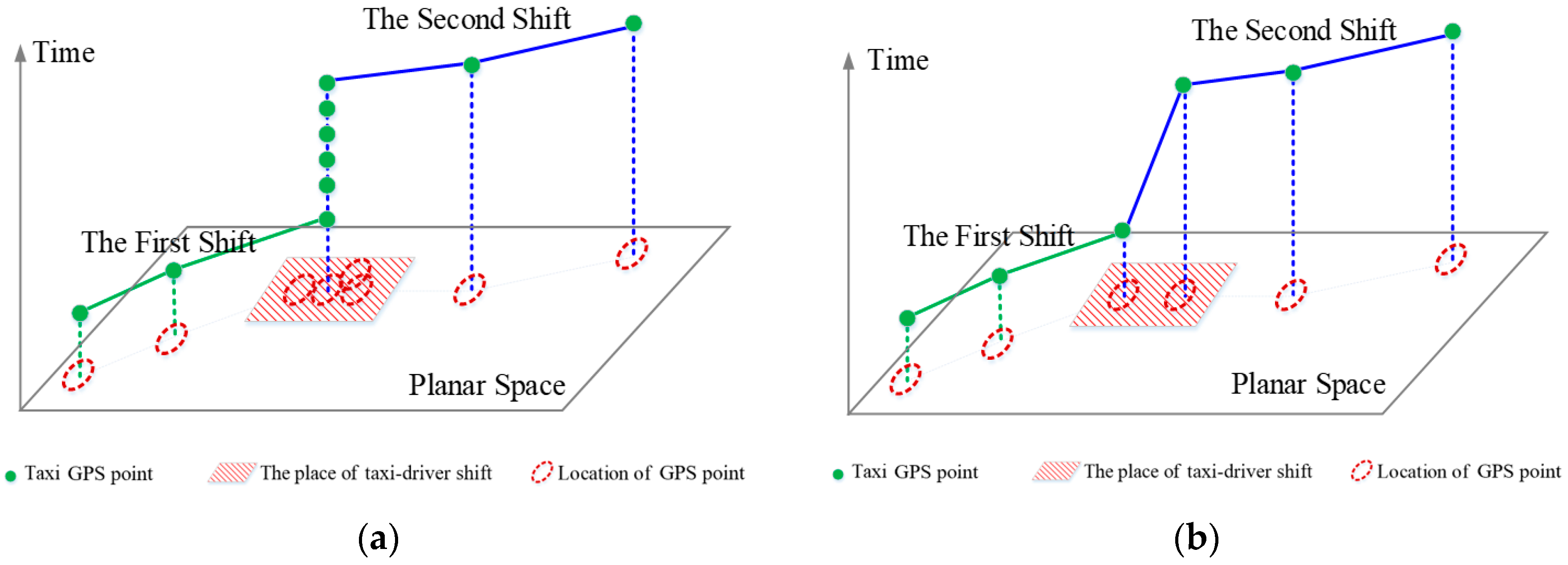

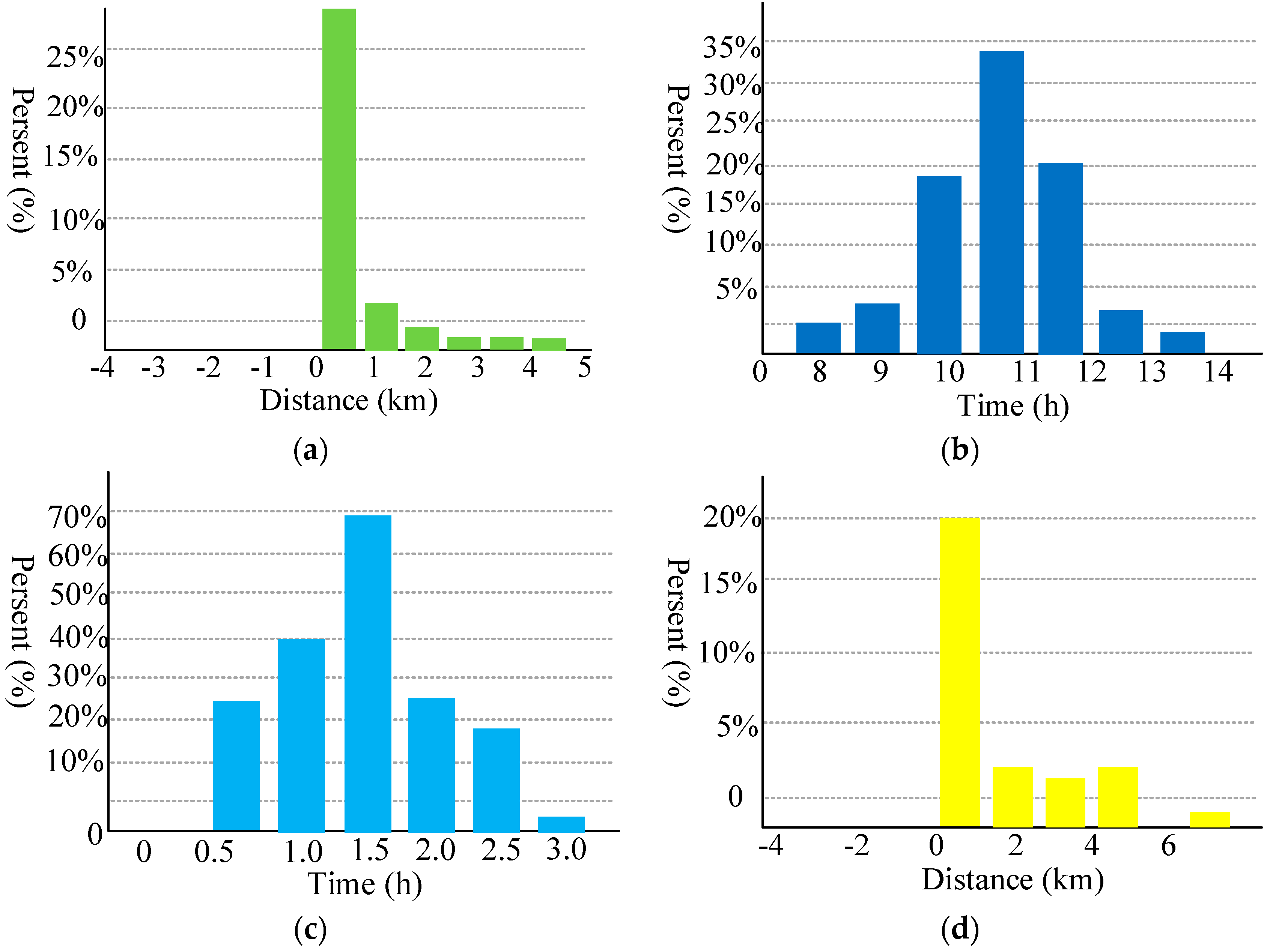
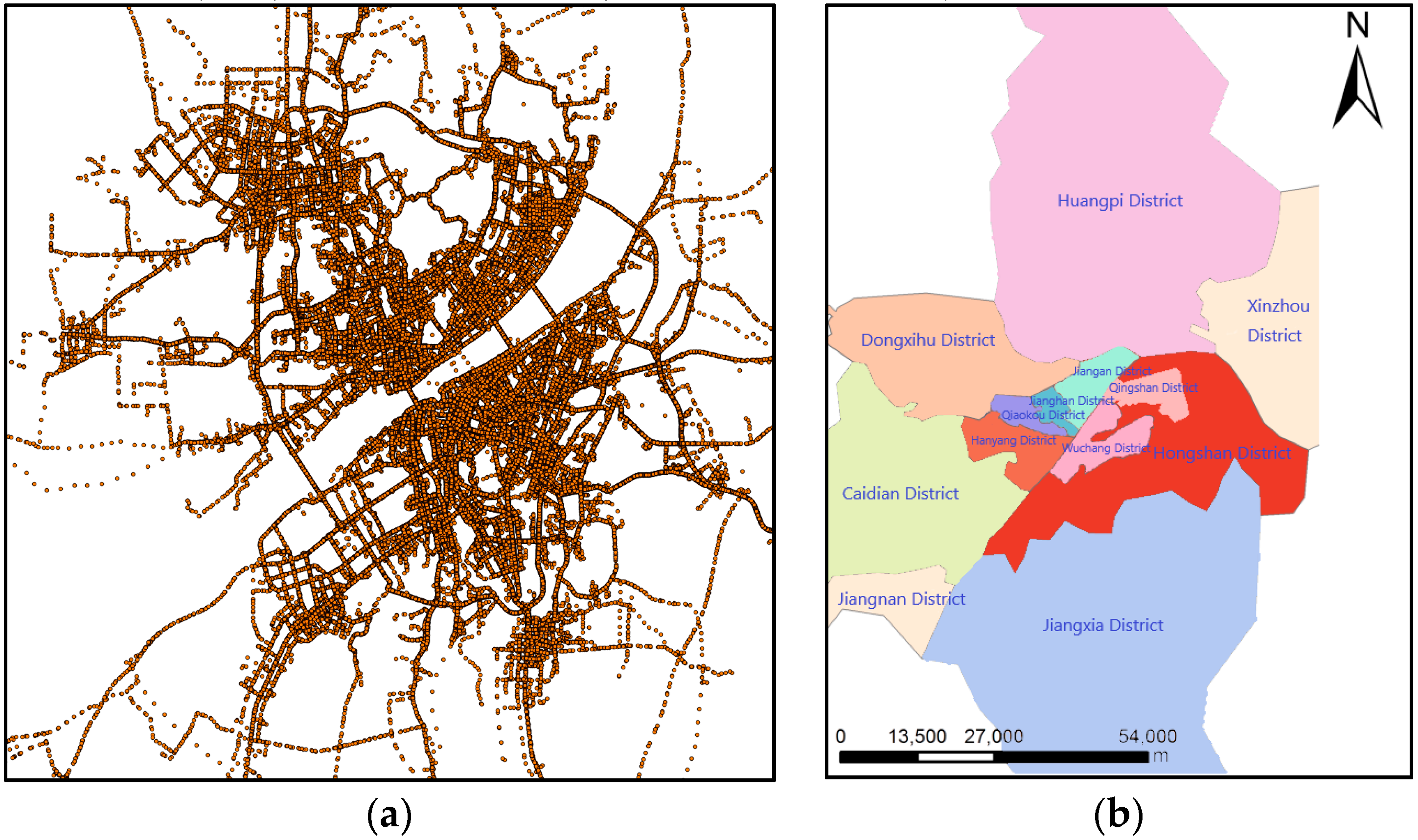
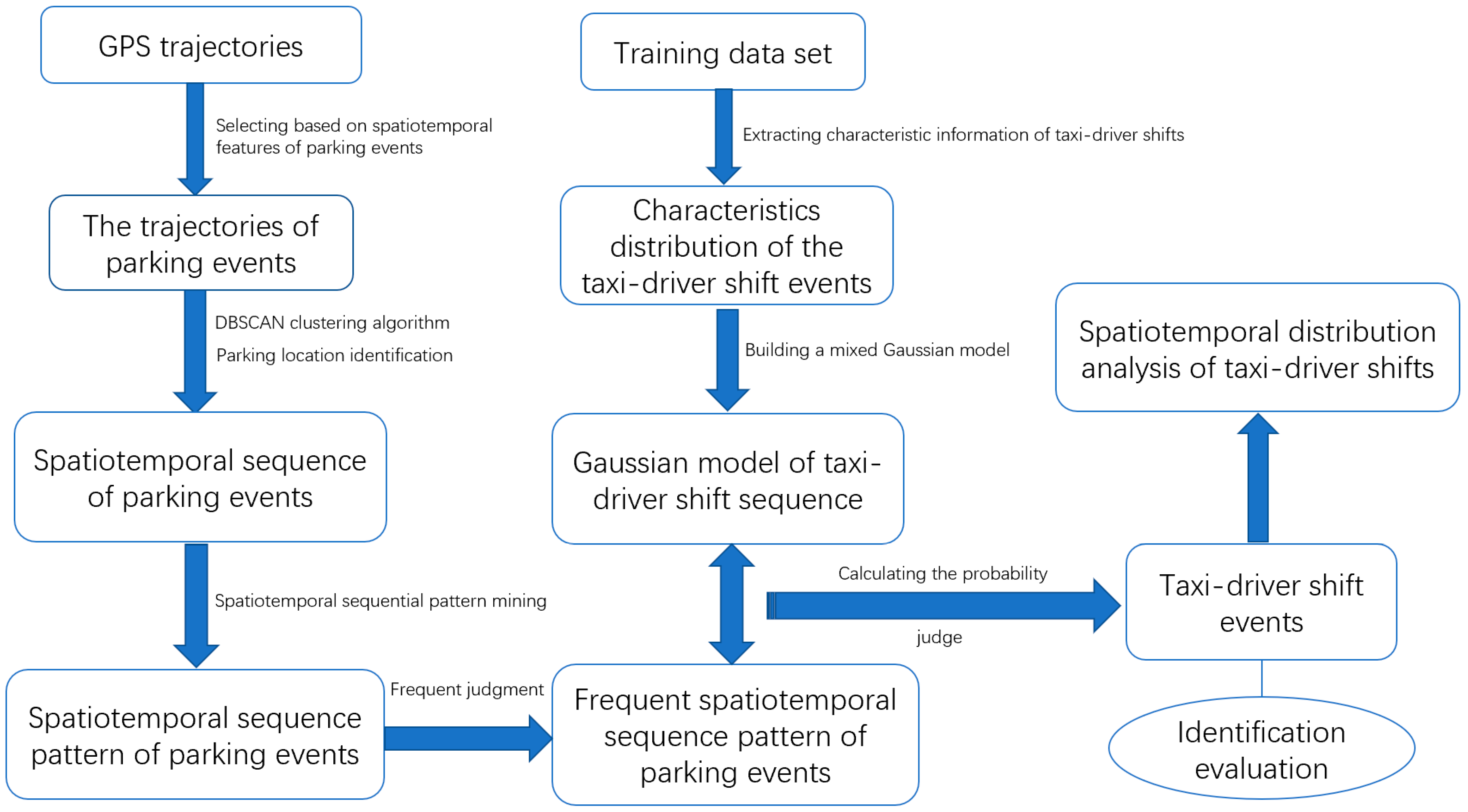
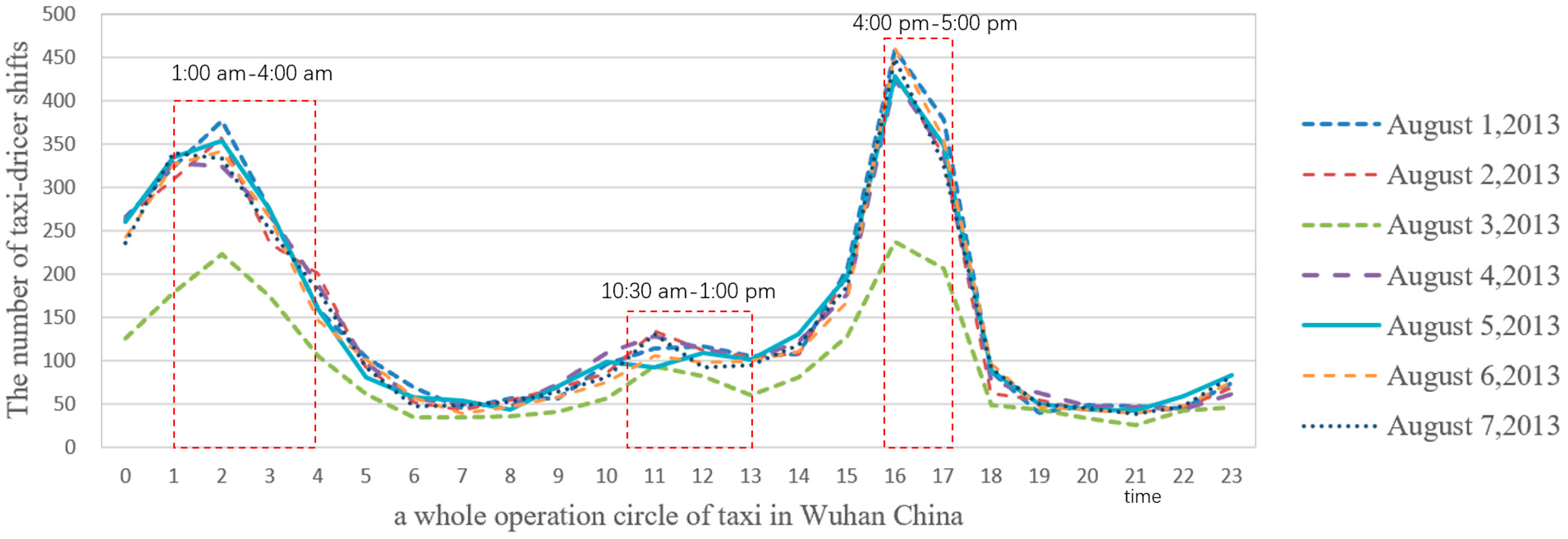
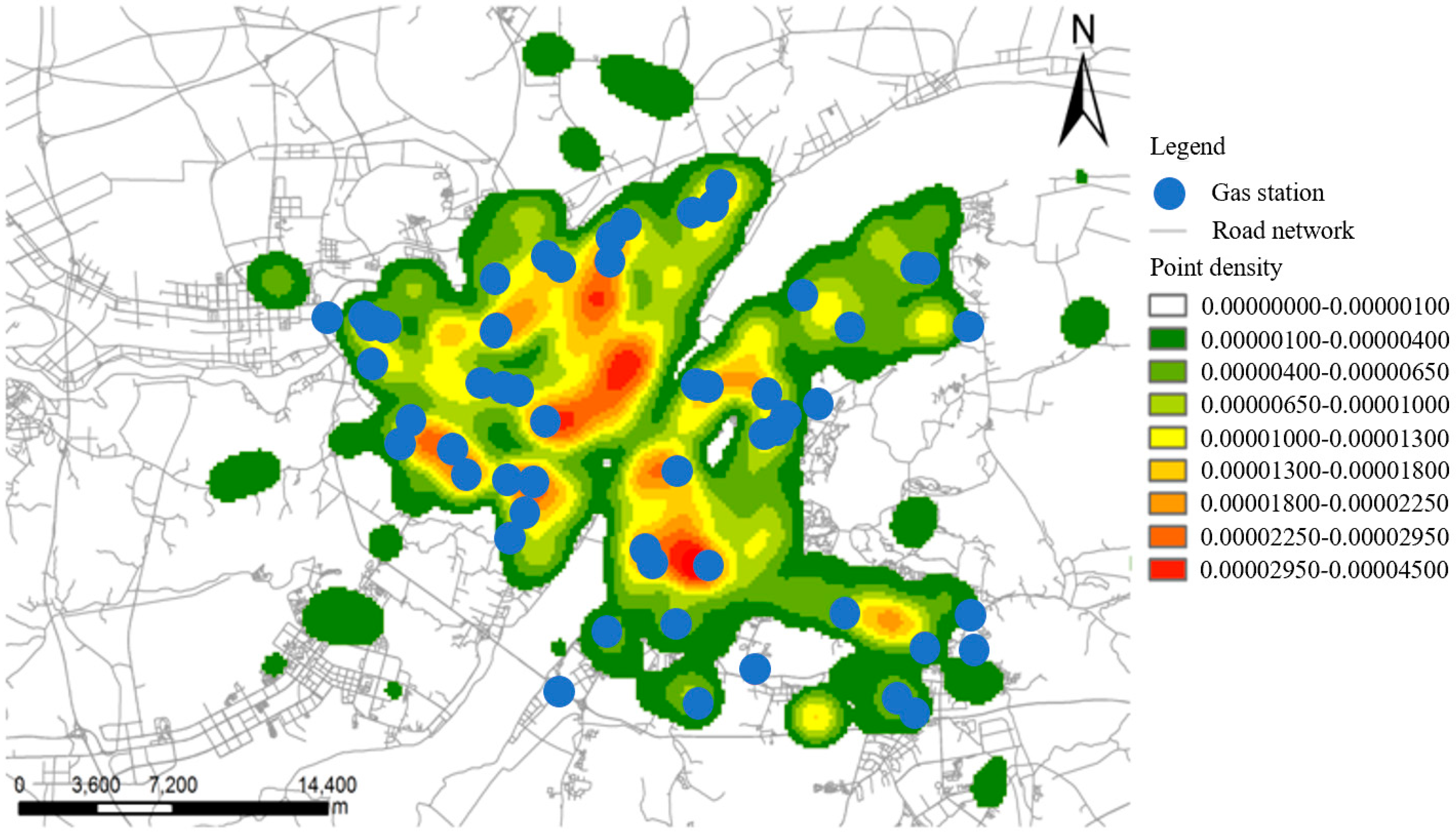
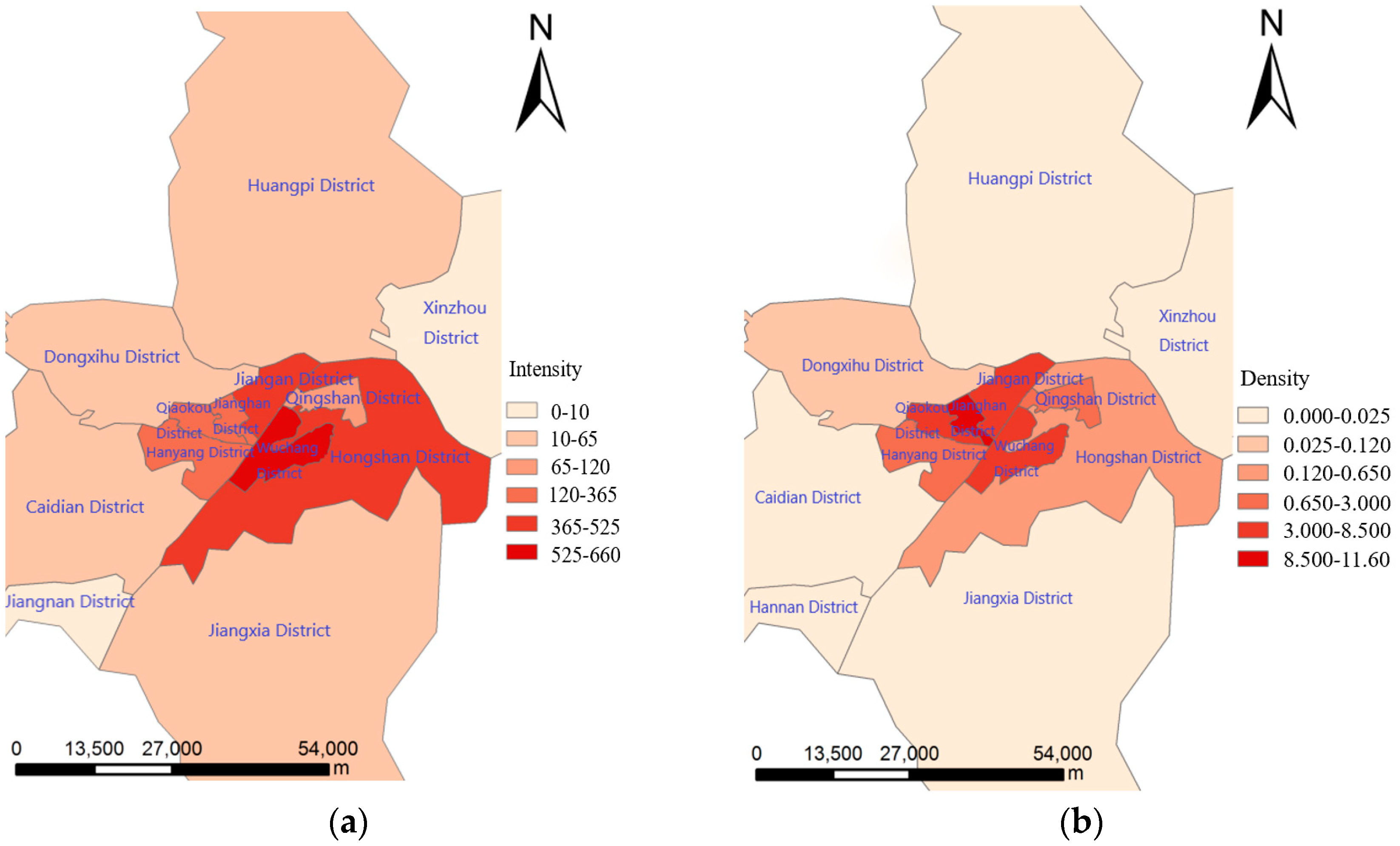
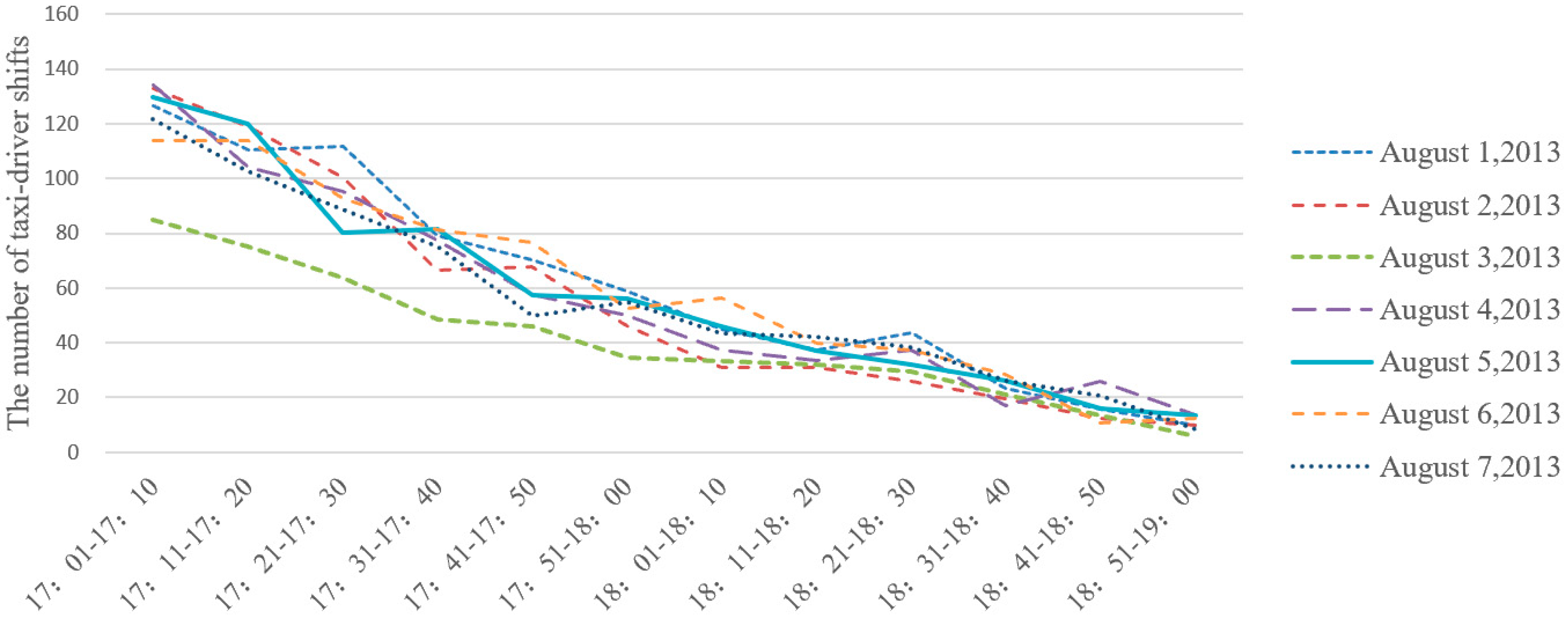
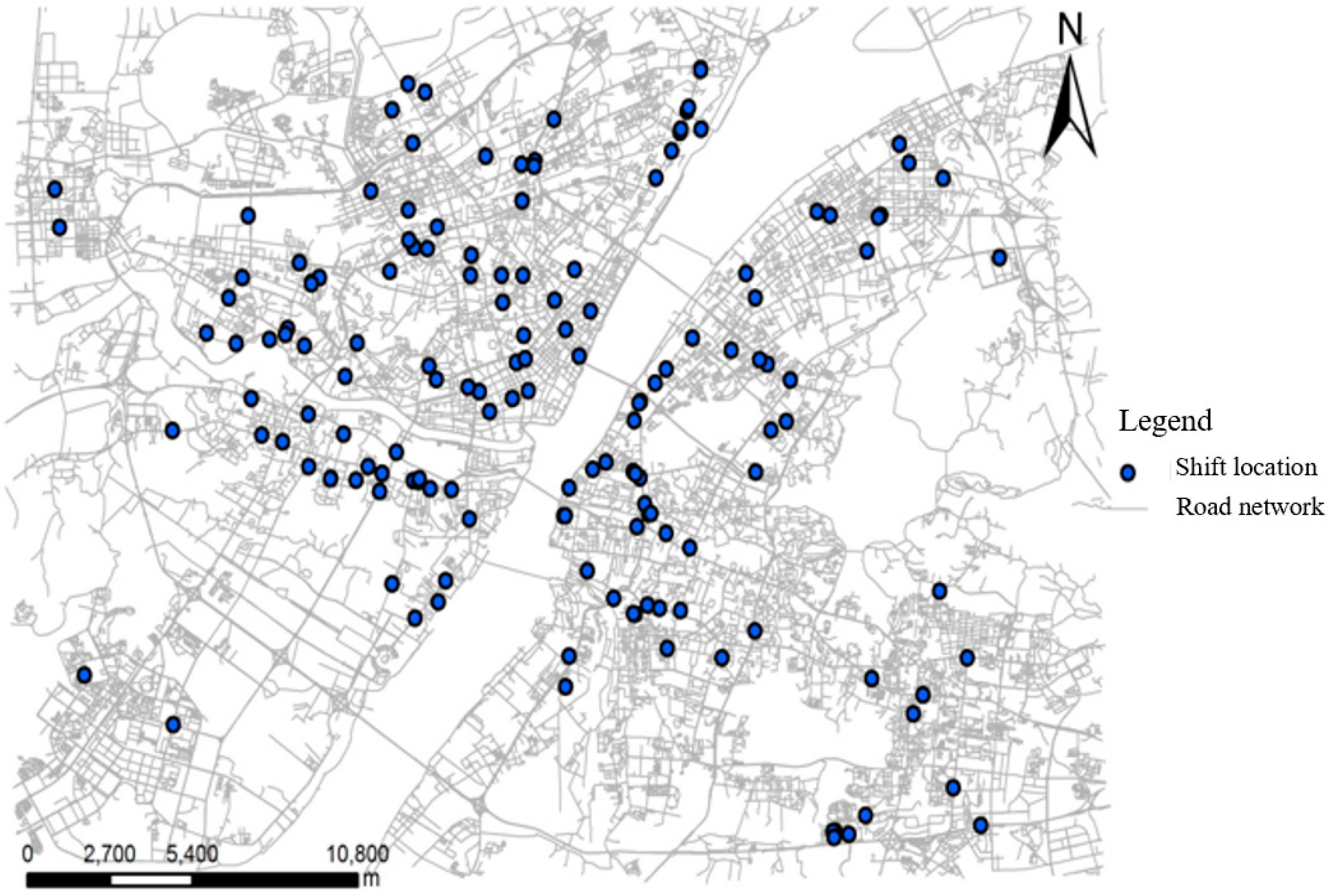
© 2020 by the authors. Licensee MDPI, Basel, Switzerland. This article is an open access article distributed under the terms and conditions of the Creative Commons Attribution (CC BY) license (http://creativecommons.org/licenses/by/4.0/).
Share and Cite
Cheng, L.; Yang, X.; Tang, L.; Duan, Q.; Kan, Z.; Zhang, X.; Ye, X. Spatiotemporal Analysis of Taxi-Driver Shifts Using Big Trace Data. ISPRS Int. J. Geo-Inf. 2020, 9, 281. https://doi.org/10.3390/ijgi9040281
Cheng L, Yang X, Tang L, Duan Q, Kan Z, Zhang X, Ye X. Spatiotemporal Analysis of Taxi-Driver Shifts Using Big Trace Data. ISPRS International Journal of Geo-Information. 2020; 9(4):281. https://doi.org/10.3390/ijgi9040281
Chicago/Turabian StyleCheng, Luling, Xue Yang, Luliang Tang, Qian Duan, Zihan Kan, Xia Zhang, and Xinyue Ye. 2020. "Spatiotemporal Analysis of Taxi-Driver Shifts Using Big Trace Data" ISPRS International Journal of Geo-Information 9, no. 4: 281. https://doi.org/10.3390/ijgi9040281
APA StyleCheng, L., Yang, X., Tang, L., Duan, Q., Kan, Z., Zhang, X., & Ye, X. (2020). Spatiotemporal Analysis of Taxi-Driver Shifts Using Big Trace Data. ISPRS International Journal of Geo-Information, 9(4), 281. https://doi.org/10.3390/ijgi9040281









